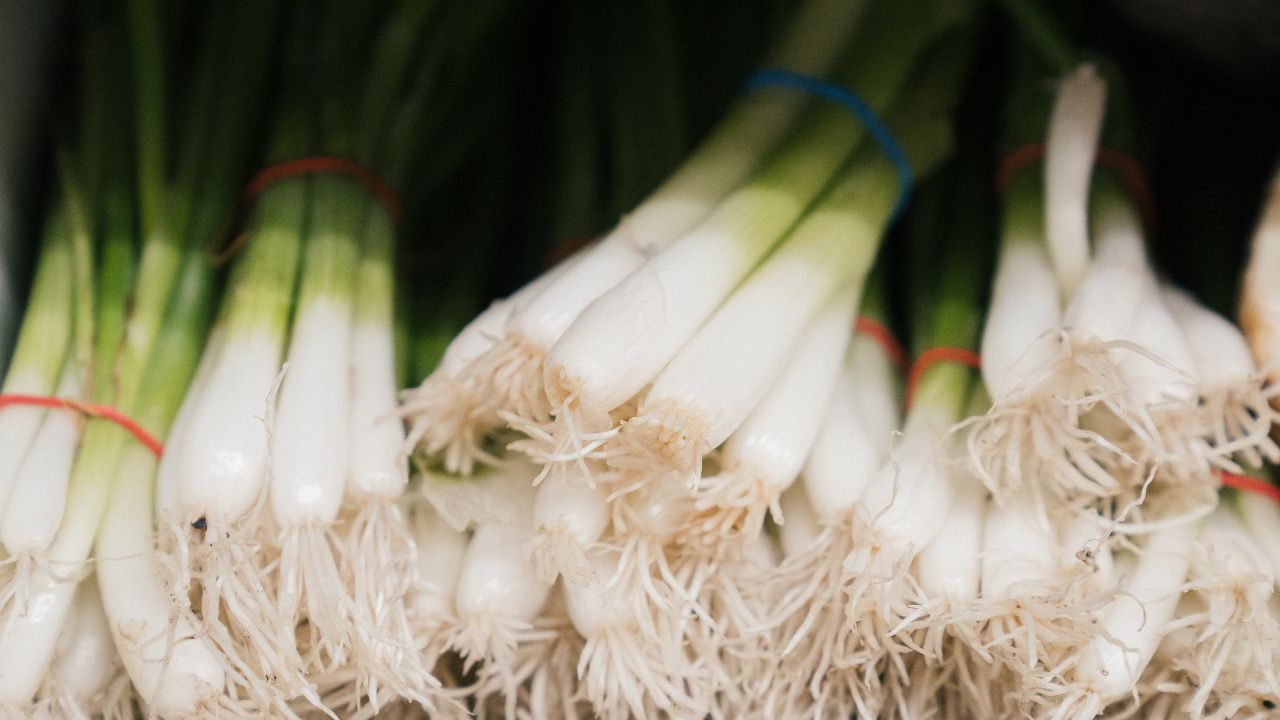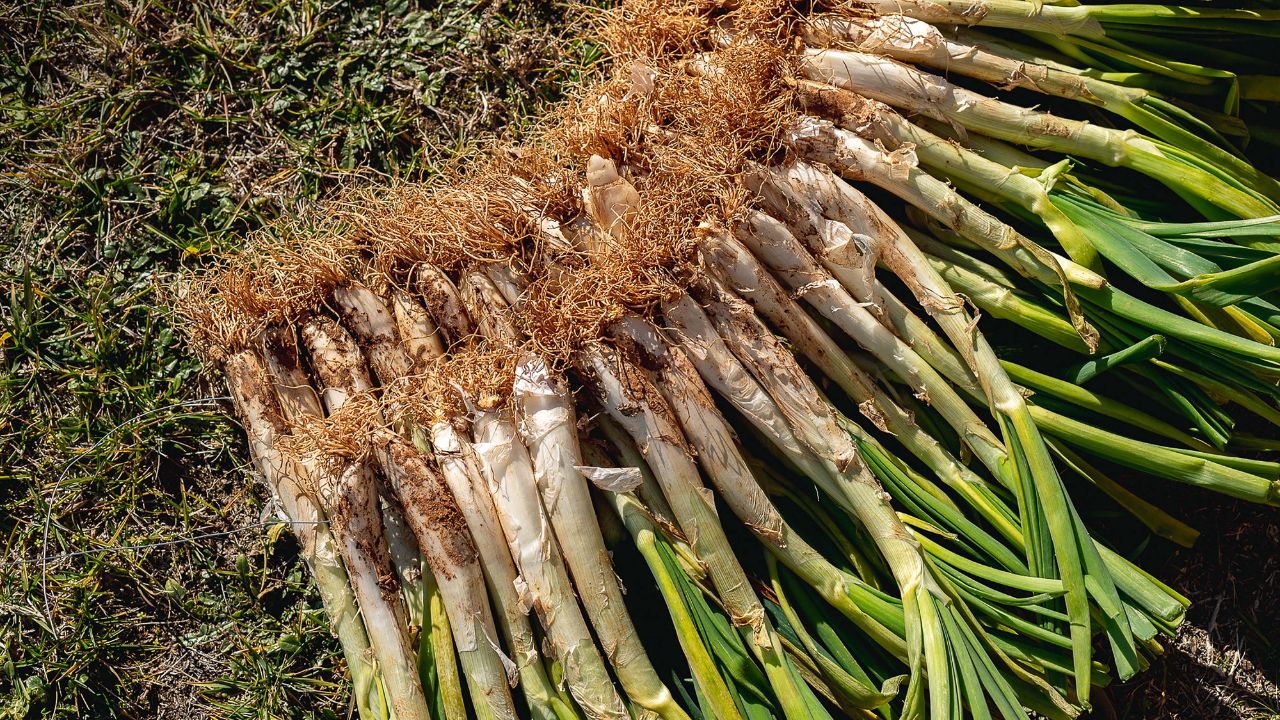Growing scallions at home is a quick and easy method to improve your meals with fresh tastes. Perfect for gardens, balconies, or even interior pots, they are adaptable, grow fast, and require little room. Apart from their gastronomic attraction, onions need minimal work and offer constant harvests all season. Grow your own versatile ingredient with our guide on how to grow scallions at home.
Growing Guide for Scallions
Contents
If you’re curious about how to grow scallions, the good news is they’re one of the easiest vegetables to cultivate at home. Scallions thrive both indoors and outdoors, and they require minimal care. Their quick-growing nature means you’ll soon enjoy a steady supply of this flavorful, mild-tasting green onion. Understanding the right conditions and methods to use will ensure a bountiful harvest. Let’s explore in detail how to grow scallions in your garden, balcony, or indoor space.

Choosing the Right Location and Soil
To successfully learn how to grow scallions, begin with selecting the ideal location. Scallions love sunlight, thriving best in spots that receive at least six hours of direct sun each day. If you’re growing them indoors, place the containers near a sunny window facing south or west. Outdoors, raised beds, garden plots, or containers on balconies work equally well. Scallions don’t demand vast spaces, making them ideal for urban gardening setups.
The soil plays an important role when you’re learning how to grow scallions effectively. They prefer nutrient-rich, well-drained soil with a slightly acidic to neutral pH (6.0–7.0). Improve your garden soil by mixing in organic compost, peat moss, or aged manure before planting. These organic amendments not only enrich the soil but also help retain moisture. Avoid heavy clay soils because scallions won’t flourish if their roots sit in water for too long. For container planting, use quality potting soil enriched with organic matter to support steady growth.
Planting Scallion Seeds or Starts
The next step in understanding how to grow scallions involves choosing between seeds or starter plants. Growing scallions from seeds is simple, economical, and gives you more variety options. Begin by sprinkling seeds lightly over prepared soil, covering them with about a quarter-inch layer of fine soil or compost. Space the seeds roughly an inch apart. Once the seedlings emerge and reach two inches tall, thin them out, leaving around two to three inches of space between plants. These thinnings can be eaten as microgreens, so nothing goes to waste.
Alternatively, starter plants (often referred to as sets) offer an even quicker way to get scallions established. Simply plant the scallion sets approximately two inches deep with the pointed end facing upwards. Maintain a spacing of three inches between each plant. Starter plants typically mature faster than seeds, allowing you to harvest your first scallions within just a few weeks.
Watering and Sunlight Requirements
Consistent watering is crucial as you learn how to grow scallions. Though they dislike overly wet conditions, scallions thrive best in evenly moist soil. Regular watering prevents the bulbs from drying out, particularly during hot, dry weather. Watering deeply once or twice per week usually suffices. In hotter conditions, monitor soil moisture closely, watering more frequently if the surface dries out. Container-grown scallions might require more frequent watering since they dry out quickly compared to ground-planted varieties.
Sunlight, as mentioned earlier, plays a significant role in scallion growth. Providing consistent full sun exposure ensures that the plants grow sturdy and vigorous. However, scallions can tolerate partial shade, making them suitable for balconies or indoor gardening where sunlight might be limited. If sunlight is scarce, consider supplementing your indoor garden with grow lights to maintain a robust, healthy growth rate.
Harvesting and Continuous Growth
The rewarding part of knowing how to grow scallions is the harvest. Scallions typically mature within 60 to 80 days if grown from seed, though starter plants can be harvested much earlier. You can begin harvesting when the green shoots reach around six to eight inches tall. Gently pull them from the soil or use scissors to cut the greens just above ground level. Harvest scallions early for milder flavor or let them mature slightly longer for a more robust onion taste.
An excellent aspect of scallions is their ability to regrow continuously. After harvesting, leave the white bulb portion with roots intact in the soil. The bulbs will regrow, producing a second or even third crop from the same plant. This continuous harvesting ability ensures that your garden provides fresh scallions throughout the growing season. Regular harvesting also encourages new growth, keeping your plants healthy and productive.
Extending Your Scallion Season
Once you’ve mastered how to grow scallions, consider succession planting for a prolonged harvest. Succession planting involves sowing seeds every three to four weeks. This approach ensures a consistent supply of fresh scallions throughout the entire season, rather than harvesting them all at once. You’ll enjoy a steady flow of delicious scallions for cooking, garnishing, or sharing with friends and neighbors.
Another method to extend your scallion supply is container gardening indoors during colder months. Simply plant scallion bulbs in pots, place them near sunny windows, and continue enjoying fresh harvests even in winter. Scallions handle indoor growing exceptionally well due to their compact growth habit and minimal care requirements.
In summary, understanding how to grow scallions involves choosing the right location, preparing quality soil, and providing consistent watering and sunlight. Follow these simple steps, and you’ll be rewarded with healthy plants that produce flavorful, nutritious scallions year-round. Whether grown outdoors, indoors, or in small containers on your balcony, scallions are an excellent addition to any garden, adding freshness and flavor to your culinary creations.

Essential Tips for Successful Scallion Growth
Growing scallions is straightforward, but knowing a few key tips can significantly boost your yield and ensure your plants thrive. These essential practices make cultivating scallions simpler and help you avoid common gardening pitfalls:
- Water Consistently, Not Excessively: Scallions prefer evenly moist soil without becoming waterlogged. Regular, moderate watering encourages healthy growth and prevents bulbs from rotting.
- Use Organic Fertilizer: Apply a balanced organic fertilizer or compost every four to six weeks. Scallions benefit greatly from nutrient-rich soil, which promotes vibrant color and robust growth.
- Watch for Common Pests: Aphids, onion maggots, and thrips are common pests of scallions. If spotted early, these pests can be controlled easily with organic insecticidal soap or neem oil.
- Maintain Good Drainage: Whether planting scallions outdoors or in containers, ensure the soil drains well. Poor drainage can quickly lead to bulb rot and fungal diseases.
- Thin Seedlings Early: Properly thinning seedlings helps provide enough space for healthy root and bulb development. Thinning also allows better airflow, reducing the risk of fungal issues.
- Practice Companion Planting: Plant scallions near carrots, lettuce, tomatoes, or cabbage. These companion plants help deter pests and mutually enhance growth.
- Mulch to Conserve Moisture: Adding a layer of organic mulch like straw or compost around scallion plants can retain moisture, reduce weeds, and maintain even soil temperature.
- Regularly Weed the Garden Bed: Keep your scallion beds free of weeds. Weeds compete with scallions for nutrients and water, weakening your plants’ growth and productivity.
- Rotate Crops Yearly: Avoid planting scallions in the same spot each year to prevent disease build-up. Rotate them with other crops like beans, peas, or leafy greens.
- Monitor Soil pH Levels: Periodically test soil pH, aiming for 6.0–7.0. Maintaining proper pH helps scallions absorb nutrients efficiently, ensuring healthy growth.
By following these tips, your scallion cultivation will be successful, productive, and rewarding, providing you with a continuous supply of fresh, flavorful scallions to enjoy at home.
Green Onion vs. Scallion: What’s the Difference?
Many people use the terms “green onion” and “scallion” interchangeably, but subtle distinctions exist between these two names. Both belong to the onion family and have mild, versatile flavors. Scallions are harvested young before their bulbs fully develop, which results in slender white bases with long green stalks.
Green onions are essentially the same plant but may sometimes have slightly larger or more developed bulbs, especially when harvested later. Understanding this minor difference can help you select the best option for your cooking and gardening preferences.
In practical gardening terms, there isn’t a meaningful difference between how to grow scallions and how to grow green onions. Both require similar care, including regular watering, nutrient-rich soil, and plenty of sunlight.
The main distinction is when you harvest them—scallions earlier for milder flavor, green onions a bit later for more developed bulbs. If you’re looking to maintain a steady supply, knowing how to grow scallions provides the advantage of quicker and continuous harvests without waiting for bulbs to mature.
Delicious Dishes You Can Make with Scallions
Scallions provide many meals a unique flavor. Scallions add flavor and texture to appetizers, main dishes, and snacks. These delicious and easy meals showcase fresh scallions at their best.
Crispy Scallion Pancakes
Scallion pancakes, a classic Asian food, are crunchy and chewy. Simple dough: flour, water, salt, and chopped scallions. The dough is rolled flat, scallions are sprinkled on top, folded into layers, flattened again, and pan-fried until crisp and fragrant. Serve these hot pancakes with soy sauce or chile oil for a tasty appetizer or snack.

Flavorful Homemade Scallion Oil
Noodles, grains, and veggies taste great with scallions oil. Heating vegetable or canola oil and adding fresh scallions makes home preparation easy. Gently cooked scallions should be delicious and lightly browned. Onions can be strained or left in oil for texture. Scallion oil adds flavor to simple foods and keeps well in the fridge.
Creamy Scallion Cream Cheese Spread
A fast homemade scallion cream cheese spread can transform your morning bagel or toast. Mix softened cream cheese with chopped scallions and a touch of salt and pepper. For added flavor, add garlic powder or lemon juice. The fresh flavor of onions pairs well with creamy cheese. This simple spread adds fresh scallion flavor to crackers, sandwiches, and wraps.
Conclusion
Growing scallions at home is both simple and rewarding, making them perfect for gardeners of any skill level. With consistent care, nutrient-rich soil, and plenty of sunlight, you’ll enjoy continuous harvests of this flavorful addition to your kitchen. Follow these easy steps on how to grow scallions, and you’ll have fresh greens ready to elevate your favorite dishes throughout the year.
Are you looking for other kinds of ingredients to grow back home? Check out our garlic green onion cultivation guide!








